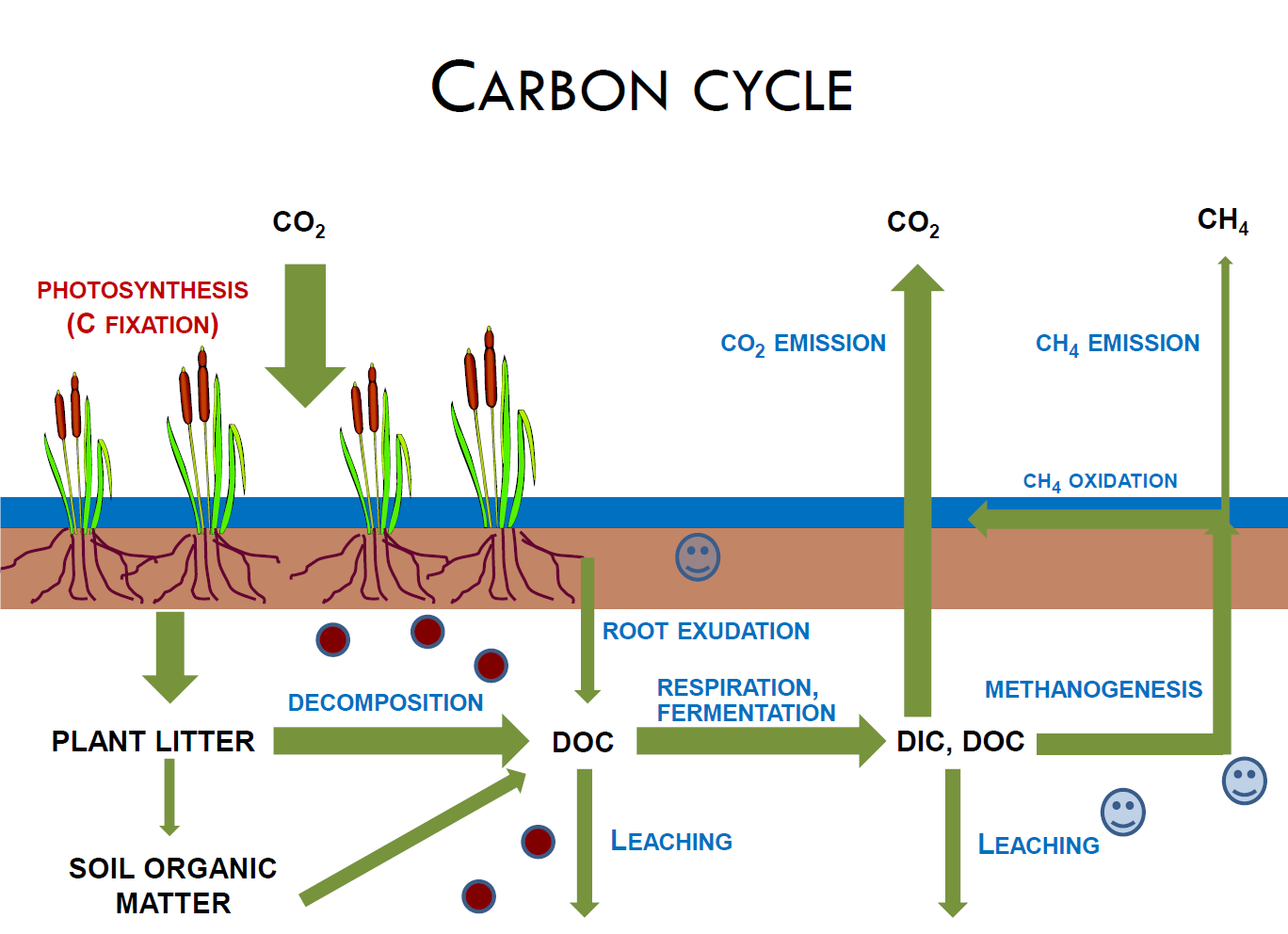Wetlands are important global carbon sink (1). Most of the C in wetlands is stored in peatlands, which are wetlands charateristic by accumulation of organic matter in form of peat, which must be at least 30 cm thick (2). The global wetlands store about one third of global soil C although they occupy only about 3 to 5 % of the earth’s total land surface (Mitsch & Gosselink, 2015). The amount of C stored in Earth soils is about 1 500 Gt (gigatonnes), from which 400 to 600 Gt of C is estimated to be stored in wetlands (Gorham 1991). The amount of carbon stored in wetlands is thus nearly three-quarters as much C as it is found in the atmosphere (Moomaw et al. 2018) and twice as much C as it is stored in the world’s forests (3, 4).
The total amount of carbon stored in wetlands is calculated using three parameters, which may vary widely: peat bulk density, average thickness of peat layer and global area of peatlands. The thickness of peat layer varies from several centimeters to several meters in bogs and even tens of meters in tropical peatlands (5). It is clear that in many areas of the Earth, the peat layer thickness is not known and thus the estimate of average peat layer is difficult. The area of peatlands also varies: on one hand the peatland area is decreasing due to human activities (6), on the other hand new peatlands are discovered especially in tropical zone. Most of the peatlands are found in boreal zone (4 million km2) and they are concentrated in North America and Eurasia (7). Tropical peatlands make up at least 10 to 12 % of the total peatland area. However, it is assumed recently, that there can be three times more tropical peatlands than estimated till now (Gumbricht et al., 2017). This is supported by the fact that the largest peatland complex in tropics was discovered in 2017. This peatland is the Cuvette Central swamp forest in Congo and its estimated area is about 145 000 km2. The content of carbon in this peatland is more than 30 Gt (Dargie et al., 2017).
Carbon in boreal peatlands accumulated for thousands of years, starting with the end of the last ice age. Peat accumulates at rates ranging from 0.5 to 1.0 mm yr-1, thus one meter of peat accumulates from one to two thousand years (Parish et al. 2008). In boreal peatlands the layers of peat may reach in maximum 12 m, whereas in tropical peatlands the peat layers thicker than 20 m may be found. This is because in tropics the peat accumulation could proceed even during or before the ice age.
The volume of tropical peat is estimated to be 18–25% of global peat volume. The carbon stored in form of tropical peat is estimated to be 88.6 Gt (range 81.7–91.9 Gt) which is equal to 15–19 % of the global peat carbon pool. At least half of tropical peatlands is found in Southeast Asia: 247 778 km2 (56% of Earth peatland area) and it is estimated, that these peatlands store 77 % of all tropical peat (68.5 Gt of carbon). (Page et al., 2011).
Coastal wetlands store only small part (about 3 %) of carbon stored in Earth wetlands, which is called „blue carbon“ (8). Although the amount of stored carbon in these ecosystems is relativelly small, coastal wetlands are important in rate of C sequestering - they have higher rate of C sequestering than all terrestrial forests together. On average, sea grasses, saltmarshes and mangroves sequester carbon 35 to 57 times faster than tropical forests (McLeod et al. 2011). Carbon storage in mangroves is exceptionally high compared to most forest types as mangroves may sequester carbon in the form of organic soil and peat.

Figure 1 Carbon pools, fluxes and processes in wetland ecosystem.
References
Mitsch W.J. and Gosseling, J.G. Wetlands. 2015. Wetlands. Fifth edition, John Wiley & Sons, New Jersey.
Moomaw, W. R., G. L. Chmura, G. T. Davies, C. M. Finlayson, B. A. Middleton, S. M. Natali, J. E. Perry, N. Roulet, and A. E. Sutton-Grier. 2018. Wetlands In a Changing Climate: Science, Policy and Management. Wetlands 38:183-205.
Page, S. E., J. O. Rieley, and C. J. Banks. 2011. Global and regional importance of the tropical peatland carbon pool. Global Change Biology 17:798-818.
Villa, J. A., and B. Bernal. 2018. Carbon sequestration in wetlands, from science to practice: An overview of the biogeochemical process, measurement methods, and policy framework. Ecological Engineering 114:115-128.
